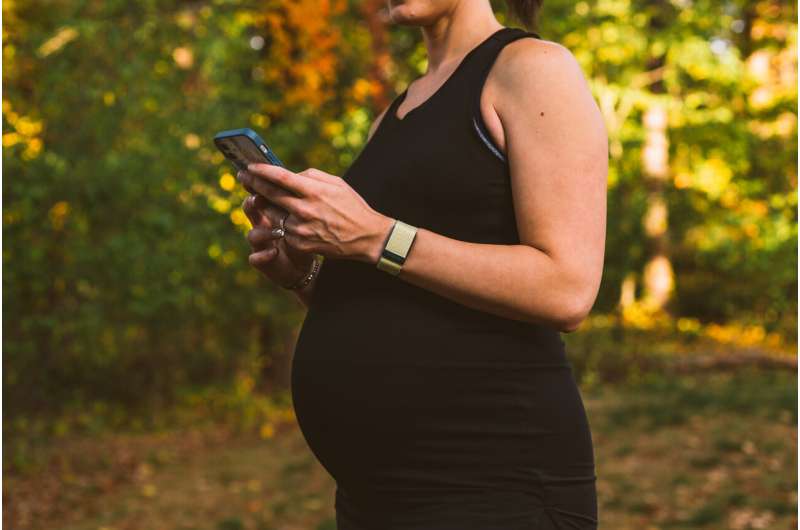February 1, 2024 report
This article has been reviewed according to Science X's editorial process and policies. Editors have highlighted the following attributes while ensuring the content's credibility:
fact-checked
peer-reviewed publication
trusted source
proofread
Differences in heart rate variability in pregnant women could be marker for premature delivery

A team of obstetricians, gynecologists and data analysts from West Virginia University School of Medicine and the West Virginia University School of Public Health, working with colleagues from WHOOP Inc., has found evidence that wrist-based heart rate monitors could predict a premature birth.
In their study, reported on the open-access site PLOS ONE, pregnant volunteers wore WHOOP monitors prior to giving birth.
Previous research has shown that after becoming pregnant, women experience heart rate variability, defined as fluctuations in the amount of time between heartbeats. This variability declines as the pregnancy progresses, around 33 weeks. At that point, variability begins to increase steadily until birth.
For this new study, the research team wondered if the same changes in variability occur with women who experience premature deliveries. To find out, they turned to WHOOP, a maker of strap-on wrist sensors that monitor heart rate, noting that a small study conducted previously with researchers at WHOOP had shown that the device could be used to track heart rate variability in pregnant women.
In the new study, 241 pregnant women of various nationalities living in 15 countries agreed to wear the device in the months leading up to their delivery.
The researchers found that heart rate variability for the women who delivered on or near their due date corresponded with previous findings—variability declined until approximately seven weeks before delivery. But things were markedly different for those women who delivered early—variability patterns were much less consistent. And variability also began a steady increase approximately seven weeks before delivery, which, in their cases, was well before their due dates.
The research team suggests that heart rate monitoring devices could become a new tool for use by obstetricians in monitoring their patients. Such devices, they note, may not only allow for better prediction of delivery dates, but could also help in employing therapies designed to prolong at-risk pregnancies.
More information: Summer R. Jasinski et al, Wearable-derived maternal heart rate variability as a novel digital biomarker of preterm birth, PLOS ONE (2024). DOI: 10.1371/journal.pone.0295899
© 2024 Science X Network




















